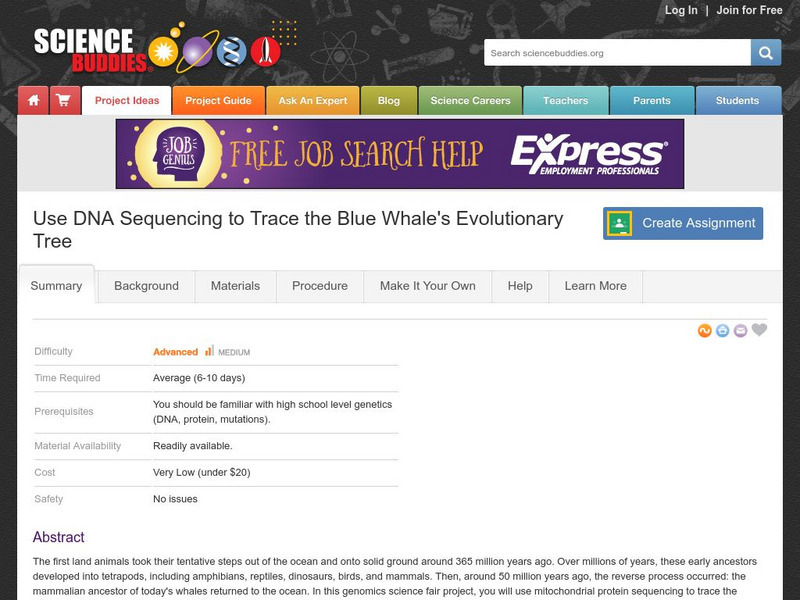Science Buddies
Science Buddies: What Is the Woolly Mammoth's Closest Living Relative?
Although Woolly Mammoths have been extinct for thousands of years, scientists continue to learn more and more about this mighty animal. Some of the most exciting new research is being produced by looking at DNA extracted from the hair...
Science Buddies
Science Buddies: Use Dna Sequencing to Trace the Blue Whale's Evolutionary Tree
Around 50 million years ago, the mammalian ancestor of today's whales returned to the ocean. In this genomics science fair project, you will use mitochondrial protein sequencing to trace the evolution of whales and identify their closest...
Science Buddies
Science Buddies: Blast Into the Past Identify T. Rex's Closest Living Relative
Believe it or not, scientists were recently able to recover tissue and partial sequence information for protein molecules from a 68-million-year-old Tyrannosaurus rex fossil. In this genomics science fair project, you will use the T....
Science Buddies
Science Buddies: Neanderthals, Orangutans, Lemurs & You; A Primate Reunion
You have probably seen figures showing how human beings are related to chimpanzees, gorillas, and other primates. In this genomics science fair project, you will use bioinformatics tools to generate your own primate family tree.
Brown University
Brown University Library: Blast, No.1: Review of the Great English Vortex
This site shares a digital version (212 pp. PDF) of the Great English Vortex.
Other
Digital World Biology: Blas Ting Through the Kingdom of Life
Use BLAST to identify unknown sequences. GenBank contains over 3 million sequences, with over 14 billion nucleotides. BLAST can be used to compare an unknown sequence to all the sequences in the database, and find sequences that match....







